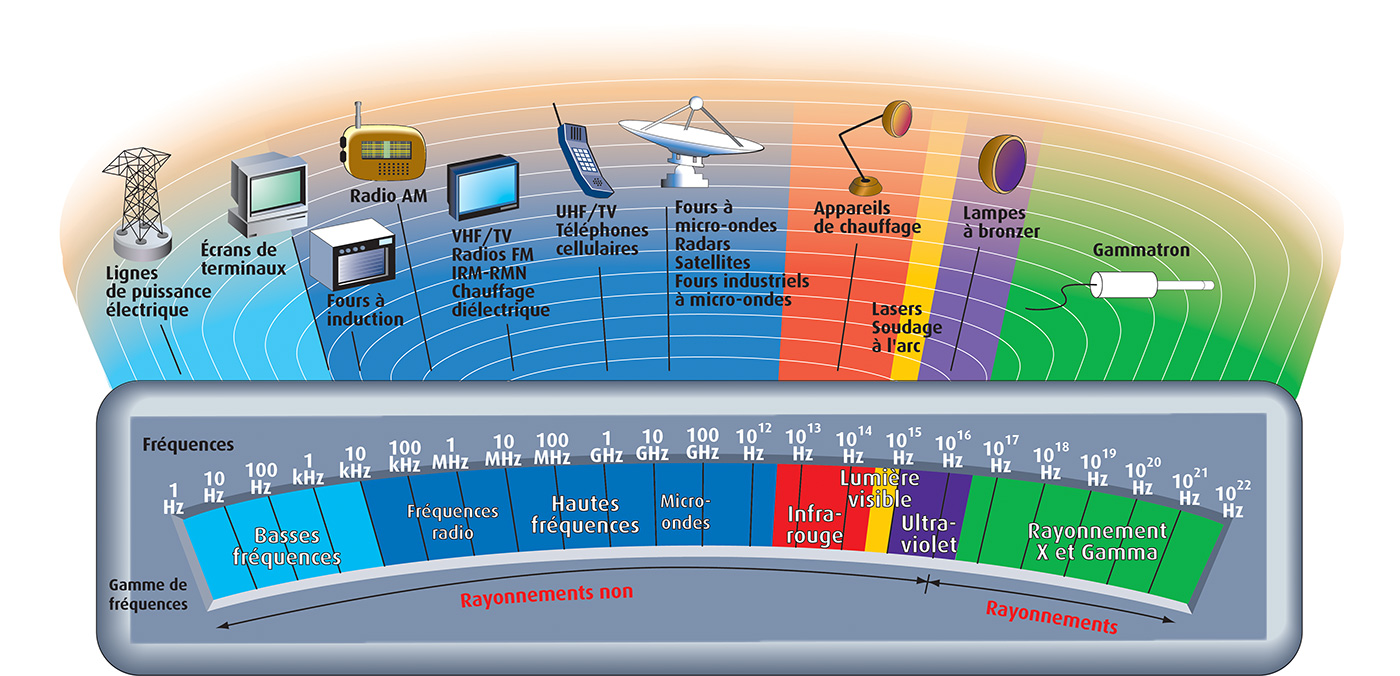Electromagnetic Waves
Electromagnetic Waves and Information
Electromagnetic waves are a fundamental aspect of physics, playing a crucial role in various technologies and communication systems. These waves, which consist of electric and magnetic fields oscillating perpendicular to each other, travel at the speed of light and have a wide range of applications in transmitting information.
Key Concepts
Electromagnetic Waves:
Definition: Electromagnetic waves are transverse waves consisting of oscillating electric and magnetic fields. They do not require a medium for propagation and can travel through a vacuum.
Speed of Light (c): Electromagnetic waves, including visible light, travel at a constant speed of approximately 299,792,458 meters per second (m/s) in a vacuum. (soit c = 3* 10^8 m.s-1)
Visible Light: The electromagnetic spectrum includes a broad range of wavelengths, with visible light occupying a small portion of it. Visible light is the range of electromagnetic waves that humans can perceive with their eyes.
Properties of Visible Light:
White Light: White light is a combination of multiple colors, or wavelengths, of light. It is often referred to as polychromatic because it contains various colors.
Monochromatic Light: Monochromatic light consists of a single color or wavelength. Each color of visible light corresponds to a specific wavelength.
Wavelength (λ): Wavelength is the distance between two consecutive peaks (or troughs) of an electromagnetic wave. It is often measured in nanometers (nm) for visible light. λ=c/f (m)
Information Transmission:
Telecommunications: Electromagnetic waves are extensively used in telecommunications to transmit information over long distances. The electromagnetic spectrum provides a range of frequencies suitable for various communication needs.
Modulation: To carry information, electromagnetic waves undergo modulation, where a high-frequency carrier wave is modified in amplitude, frequency, or phase according to the information to be transmitted.
Frequency Range: The choice of frequency range within the electromagnetic spectrum depends on the specific application and communication requirements.
Antenna Dimensions: The dimensions of receiving and transmitting antennas are determined by the wavelength of the electromagnetic waves used. Antennas must be appropriately sized to efficiently capture or emit these waves.

Information Transmission Process

Signal Generation: An electrical signal carrying information, such as voice or data, is generated.
Modulation: The electrical signal modulates (alters) a high-frequency carrier wave. Modulation can take various forms, including Amplitude Modulation (AM), Frequency Modulation (FM), or Phase Modulation (PM).
Transmitter: The modulated carrier wave is sent through a transmitting antenna as electromagnetic waves.
Transmission: Electromagnetic waves propagate through space, carrying the modulated information.
Receiver: The receiver, equipped with an antenna of appropriate dimensions, captures the electromagnetic waves.
Demodulation: The receiver separates the modulated information from the carrier wave, recovering the original signal.
Signal Processing: The received signal may undergo further processing and decoding to extract the transmitted information.

Spectral Considerations
Spectrum Allocation: Different applications (e.g., radio, TV, Wi-Fi, cellular) utilize specific frequency bands within the electromagnetic spectrum, ensuring that signals do not interfere with each other.
Frequency Bands: Each frequency band has specific characteristics, including propagation characteristics and information-carrying capacity.
Regulation: Government regulatory bodies allocate and manage frequency bands to prevent interference and ensure efficient spectrum utilization.

Understanding electromagnetic waves and their role in information transmission is fundamental to modern communication systems and technologies. It enables the efficient exchange of data, audio, and video over vast distances, forming the backbone of our interconnected world.
